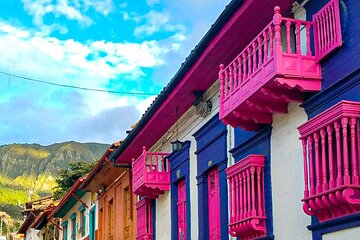TravelOne uses cookies to give you the best possible service. If you continue browsing, you agree to the use of cookies. More details can be found in our privacy policy.





You can cancel up to 24 hours in advance of the experience for a full refund.
Select a pickup point
Pickup details
Pick-up Time: Between 07:00 and 10:00, choose a departure time most suitable for you. Pick-up & Drop off Place: Your self-booked accommodation in Shanghai. ... Read more ▼
Also named Terracotta Army, the Terracotta Warriors and Horses are a collection of terracotta sculptures depicting the armies of Qin Shihuang, the first Emperor of China. They were buried to protect the emperor in his afterlife. The Terracotta Army were discovered in 1974 by local farmers drilling wells for irrigation. The figures vary in height according to their roles, with the tallest being the generals. The figures include warriors, chariots and horses. There are an estimated of 8000 soldiers, 130 chariots with 520 horses and 150 cavalry horses buried in three pits. Other terracotta non-military figures were found in other pits, including officials, acrobats, strongmen and musicians. The Terracotta Army is one of the most significant archaeological excavations of the 20th century in the world. It was listed as a UNESCO World Heritage Site in 1987.
2 hours
Located at the northern foot of Mt. Lishan, Emperor Qin's Mausoleum is the final resting place of Emperor Qin Shihuang, founder of the first unified empire in Chinese history in the 3rd century BCE. The tomb mound, begun in 246 BCE, stands at a height of 76 meters within a rectangular double-walled enclosure. The property area of 56.25 square kilometers contains nearly 200 accompanying pits with terracotta warriors and horses, bronze chariots and weapons, acrobats, strongmen and musicians, and architectural remains. The highlight of the mausoleum is the two sets of bronze chariots that were unearthed in 1980. These chariots are half the size of the real chariots and are widely believed to resemble the real imperial chariots and horses used by Emperor Qin Shihuang.
45 minutes
The Small Wild Goose Pagoda, sometimes called the Little Wild Goose Pagoda, was built between 707-709 AD during the Tang dynasty. It was originally built to house sacred Buddhist texts brought from India. The pagoda was originally 45 meters tall with 15 stories, but due to numerous earthquakes, the two upper stories were destroyed. The existing 13-story pagoda measures 43.4 meters in height. The Small Wild Goose Pagoda is known for its beautiful architecture and its religious significance. The pagoda is a UNESCO World Heritage Site.
45 minutes
Xi’an Museum houses a collection of over 130,000 fine cultural relics unearthed in Xi'an. The museum’s architectural design follows the traditional Chinese concept of the universe, with a round heaven and a square earth. The underground exhibition hall tells the ancient tales of Xi'an being the capital of 13 feudal dynasties lasting for over 1100 years since 1046 BC. The first floor displays Buddhist statues, mostly carved in stone with some in gilded copper and bronze. The museum showcases the pomp and pageantry of China's ancient capital Xi'an.
1 hour
The Great Mosque of Xi'an is the largest and best-preserved ancient mosque in China. It was built in 1384 during the Ming dynasty and follows the layout of traditional Chinese Confucian temples. The mosque is aligned on an east-west axis, facing Mecca, and has four courtyards leading to a prayer hall at the western end. The first courtyard is home to a 9-meter-high wooden arch. The second courtyard has a stone arch with two steles on either side, each inscribed with famous calligraphy. The third courtyard has a three-story Chinese pagoda that serves as the mosque's minaret. The fourth courtyard has the ‘One God Pavilion’ with the Muslim declaration of faith ‘God is One’ in Chinese characters. The prayer hall is a monumental timber building with a turquoise hip roof, painted wooden brackets, and a six-pillared portico. The mosque's arrangement of courtyards and Islamic designs is a fascinating blend of Chinese and Arabian styles.
1 hour
The Muslim Quarter is the center of the Muslim community in Xi’an. Located north of the Drum Tower in the city center, it spans several blocks and is home to over 20,000 Muslims and seven mosques. The quarter is a maze of street food, restaurants, and bustling local life. Narrow streets are lined with souvenir shops and eateries serving delicious local and Islamic cuisine, such as yangrou paomo, roujiamo, kebabs and noodles. The air is permeated with the sounds of Arabic music and the aroma of spices. It’s an excellent place to learn about Islam’s history and culture in China and to experience the vibrant atmosphere of a Muslim community.
1 hour
You can cancel up to 24 hours in advance of the experience for a full refund.
9 hours to 10 hours
 Free Cancellation
Free Cancellation
5 hours
 Free Cancellation
Free Cancellation
2 hours to 4 hours
 Free Cancellation
Free Cancellation
9 hours to 10 hours
 Free Cancellation
Free Cancellation
5 hours
 Free Cancellation
Free Cancellation
2 hours
 Free Cancellation
Free Cancellation

Assemble your Viator Booking Number or Itinerary Reference Number and the proof of the lower price you found.
Email connect@travelone.io with the documents, your name, and your home address.
We'll examine your materials and get in touch as soon as we can.
If everything checks out, we'll refund you the difference between the two prices.
TravelOne uses cookies to give you the best possible service. If you continue browsing, you agree to the use of cookies. More details can be found in our privacy policy.


























